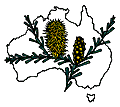Plantes proteàcies de Sud Àfrica
Proteaceae plants of South Africa
Proteaceae plants of South Africa
















Thanks to the hosting team of Luiz, Denise,Laerte and Sandy.
Les proteàcies (Proteaceae) són una família de Angiospermes de l'ordre Proteales. Consta de 80 gèneres i unes 2000 espècies, que es distribueixen per l'hemisferi sud, ocupant àrees d'origen Gondwana i els seus fragments. La major concentració de diversitat de tàxons es troba a Austràlia i Àfrica del Sud.
Proteaceae is a family of flowering plants. Mainly restricted to the Southern Hemisphere, it is a fairly large family, with around 80 genera but fewer than 2000 species. Together with the Platanaceae and Nelumbonaceae they make up the order Proteales.
Proteaceae are mainly a southern hemisphere family, with its main centres of diversity in Australia and South Africa. It also occurs in Central Africa, South and Central America, India, eastern and south-eastern Asia, and Oceania. Only two species are known from New Zealand although fossil pollen evidence suggests there were more previously.
Proteaceae is a family of flowering plants. Mainly restricted to the Southern Hemisphere, it is a fairly large family, with around 80 genera but fewer than 2000 species. Together with the Platanaceae and Nelumbonaceae they make up the order Proteales.
Proteaceae are mainly a southern hemisphere family, with its main centres of diversity in Australia and South Africa. It also occurs in Central Africa, South and Central America, India, eastern and south-eastern Asia, and Oceania. Only two species are known from New Zealand although fossil pollen evidence suggests there were more previously.
































































































.jpg)



+18.20.50.png)


















































